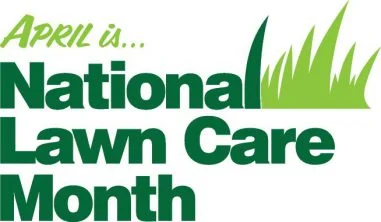The Importance of National Lawn Care Month

With longer days and warmer temperatures, the month of April beckons us outdoors to enjoy the beauty of spring. It is only fitting, then, that April also happens to be National Lawn Care Month. As landscape professionals, we tout the benefits of proper lawn care year-round, including curb appeal, safety, and personal enjoyment. Today, in recognition of National Lawn Care Month, we share some of the lesser-known benefits of landscaping.
Cleaner Air – Grass and plants create cleaner air by capturing pollutants, smoke, and dust. According to the Georgia Turfgrass Foundation, lawns capture more than 12 million tons of dust each year! Not only does vegetation clean the air, but it also produces oxygen. During photosynthesis, plants use sunlight to turn carbon dioxide and water into food, resulting in the absorption of carbon and the release of oxygen. Over 100 gigatons of carbon are consumed by plants each growing season.
Cleaner Water – Lawns protect water quality by absorbing harmful runoff that could otherwise enter bodies of water. Water absorbed by healthy grass is then filtered as it passes through the root system. According to The Lawn Institute, water filtered through a healthy lawn can be nearly 10 times less acidic than runoff from a hard surface.
Cooler Temperatures – Landscaping can significantly reduce temperatures inside and outside of a home or building. The urban heat island effect demonstrates this. As roads and buildings replace vegetation, temperatures in cities increase and create an “island” of heat. By contrast, areas with more vegetation tend to be cooler. Lawns can be 30 degrees cooler than asphalt and 20 degrees cooler than bare soil. Trees also help reduce heat by providing shade and releasing water into the air through evapotranspiration.
Reduced Noise – Landscaping absorbs sound and reduces noise. Using turf in road embankments instead of concrete can decrease traffic noise by nearly 200 percent, according to the Institute of Agriculture and Natural Resources at the University of Nebraska.



































